5 Most Durable Materials To Choose For Your Forever Home
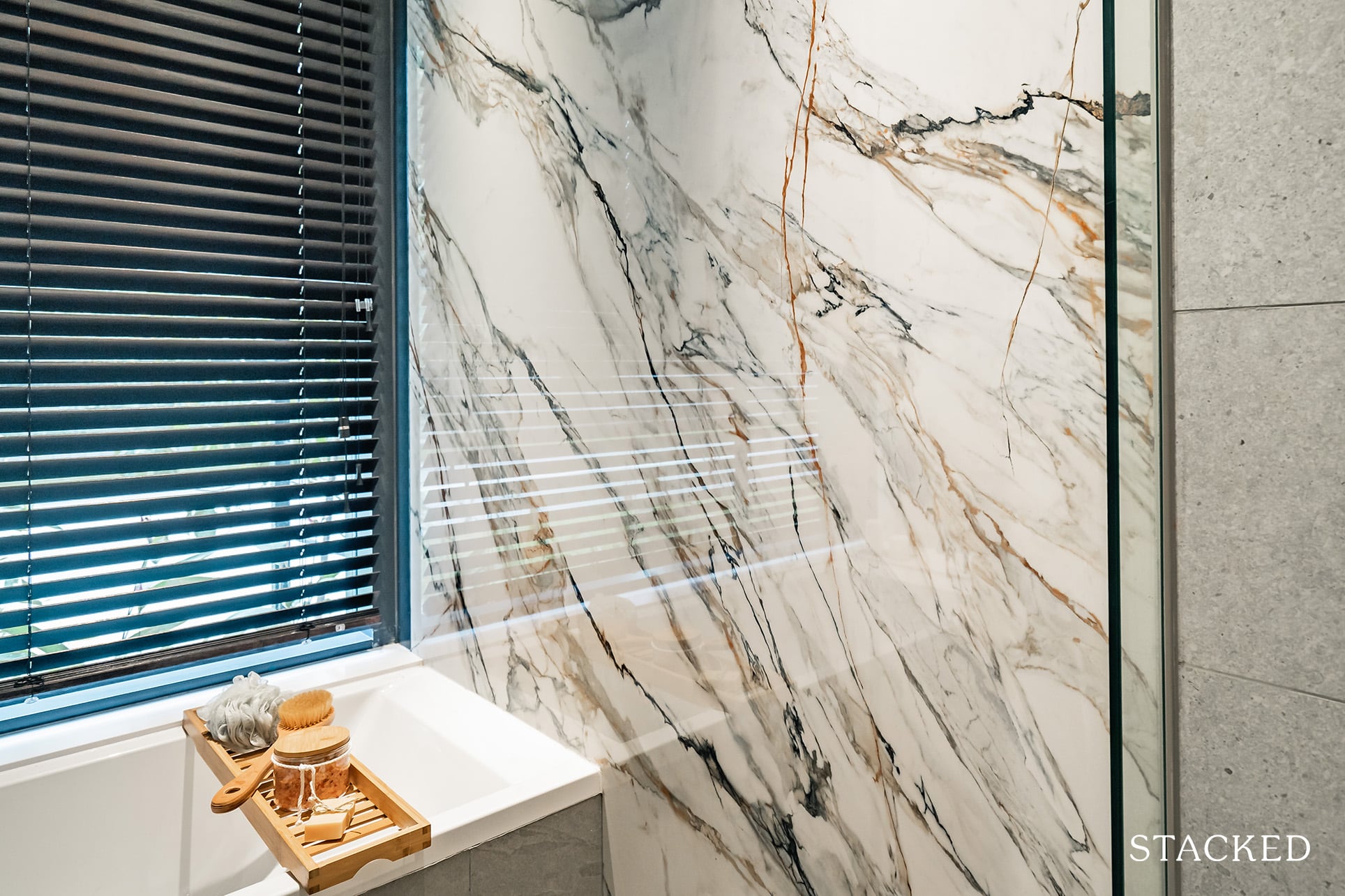
Get The Property Insights Serious Buyers Read First: Join 50,000+ readers who rely on our weekly breakdowns of Singapore’s property market.
Adriano is an old school real estate guy. Prior to establishing his own architectural/engineering design firm in New York City, he’s worked for a Brooklyn-based developer developing multifamily residential projects across the 5-Boroughs. In Singapore, he has experience with managing hospitality projects and rehabilitation of conservation shophouses. In his free time, he enjoys photography.
Ever wondered why some renovations can cost up to $100K when it looks the same as a $50K one that you’ve seen before?
Well, with renovation projects, it’s usually more than meets the eye, and a lot of it has to do with material choices.
Here’s the thing, while most people would definitely have a limited budget to work with, sometimes it just makes sense to pay for better quality if you are intending on staying for a long time.
For example, you might have decided to opt for laminate countertops because they are a more affordable option and look good when new. But if you do use the kitchen a lot, it is more susceptible to scratches and burns – and in the long run, may even start peeling. So if you do need to replace it in a few years, this may cost even more for the additional labour to remove and install a new countertop.
As the saying goes, don’t be penny wise pound foolish.
So for those looking at their forever home, here’s a quick list of more known durable materials to look at. Keep in mind though, that it’s important to consider the pros and cons of each option carefully and to consult with a professional builder or architect to ensure that the chosen material is appropriate for the specific needs of your home.
Table Of Contents
Let’s start with one of the most popular materials, quartz.
Quartz
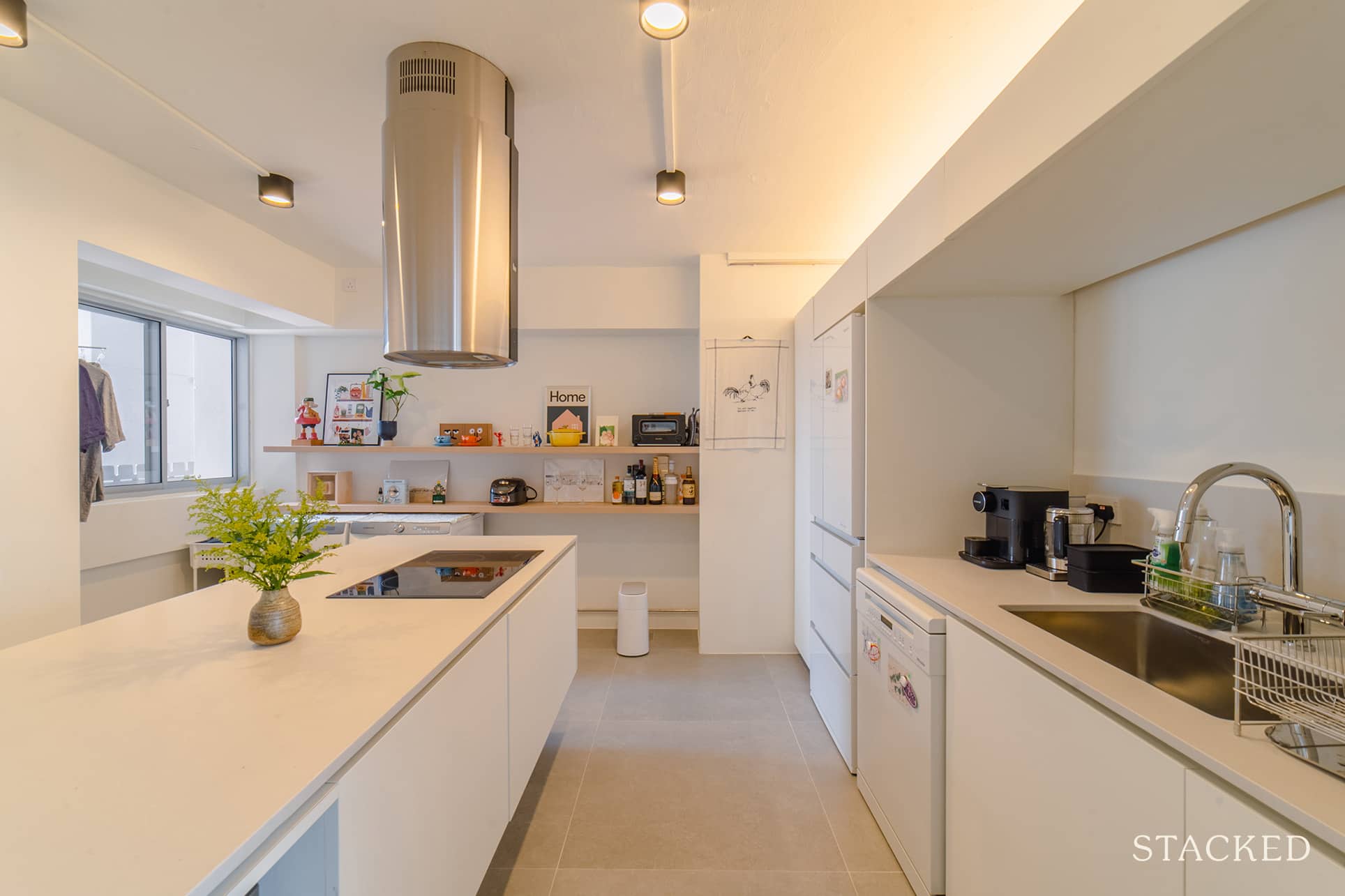
Quartz, often used for countertops, backsplashes, and flooring, is a type of engineered stone made from natural quartz crystals. Different design options can be created when combined with other materials, such as resin and pigments.
Durability is one of the key advantages of using quartz, as it’s highly resistant to scratches, stains, and heat. It’s also non-porous, which means it does not absorb liquids or bacteria, making it very suitable for kitchens and bathrooms.
When it comes to design and style options, quartz is actually versatile, able to mimic the look of natural stone, such as marble or granite. As such, it’s easy to achieve the look that you want while enjoying the durability and low maintenance characteristics of this material.
However, it’s important to consider that quartz can end up being more expensive than some other options, such as laminates or tile (as with anything that is better quality). In addition, this material requires professional installation as it can be heavy and difficult to work with. Another thing to keep in mind is that while quartz is highly resistant to heat, it’s not completely heat-proof, so prolonged exposure to high temperatures can eventually cause damage.
Microcement (Over Cement Screed)
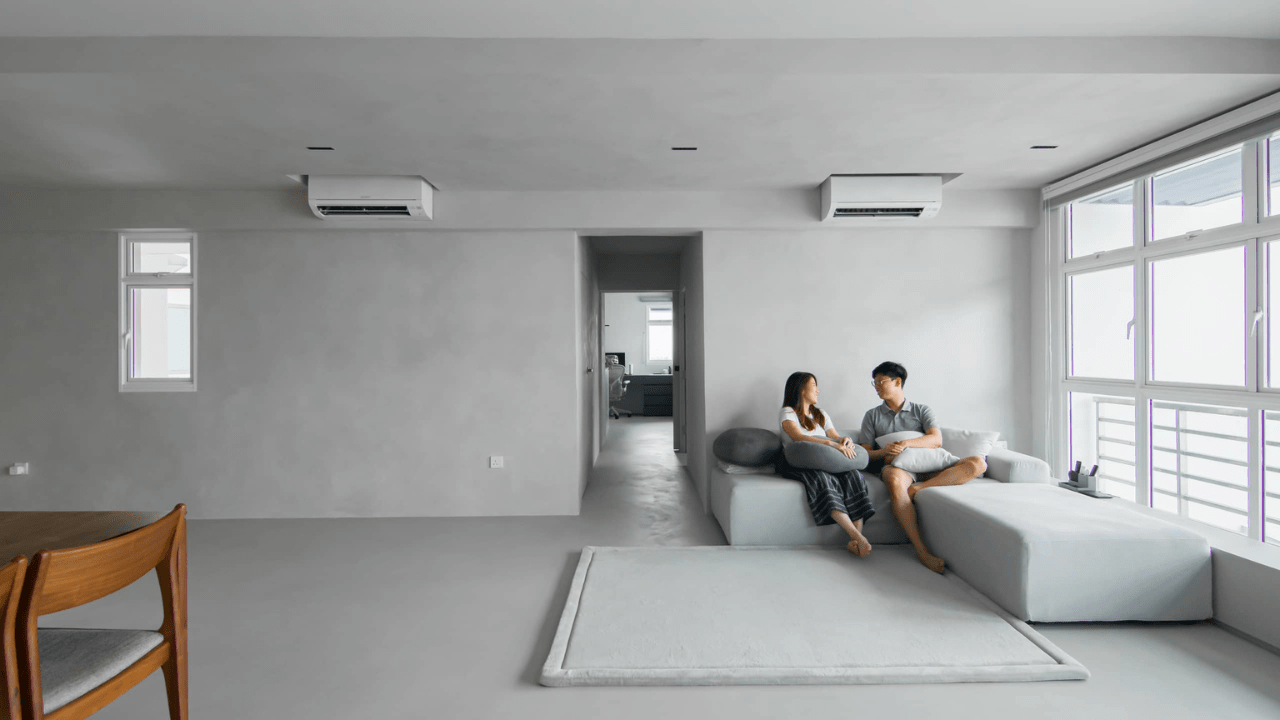
Cement screed is de facto as underlayment for tile flooring, but it can also be used as a finished floor surface by polishing it to a smooth finish. This approach creates a more raw and industrial look popular in modern homes today.
However, cement screed has its own fair share of issues. For one, you can expect chips and cracks to happen as it depends on the humidity and temperature of your home. It is also quite porous if not sealed properly, and the moisture can result in the growth of mould and fungus.
So if you prefer that cement screed look but want something more durable, microcement is one you should consider.
In terms of durability, both of these materials are highly resistant to wear and tear, however, microcement is generally considered to be more durable. This is because microcement is made with a combination of cement and polymer resins, giving it a higher level of resistance to cracking and other forms of damage.
Microcement is also more versatile because it can be applied to a wider range of surfaces than cement screed, including walls, floors, and even furniture. Furthermore, microcement is available in a wider range of colours and textures than cement screed, making it easier to achieve a custom look.
However, it’s important to note that microcement is definitely more expensive as it requires more specialised equipment and expertise to install. It also requires a smooth and even substrate, which may require additional preparation work and cost.
Brick Is Durable (But Dusty)
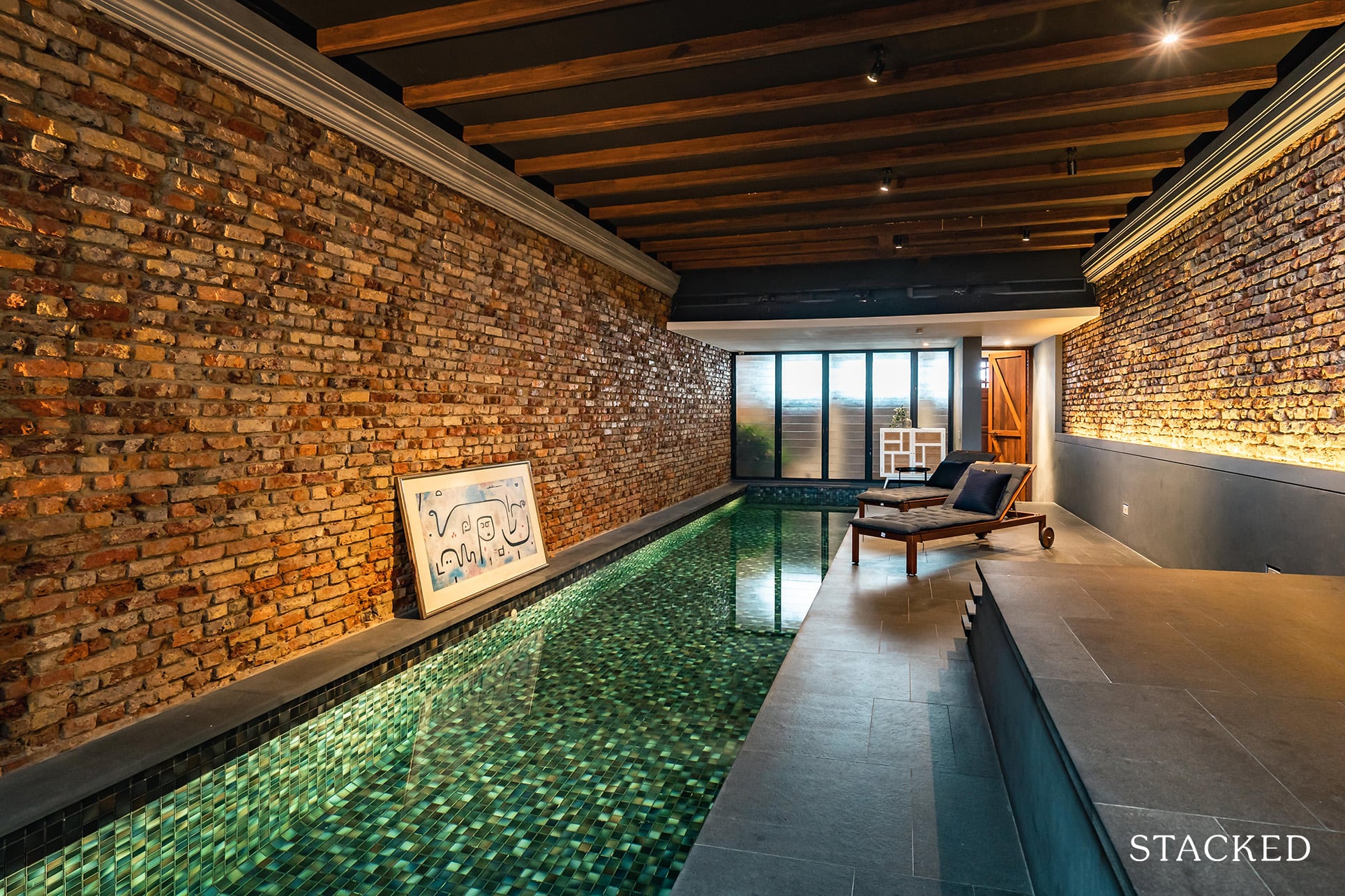
Bricks are traditional building materials that have been used for thousands of years already. When it comes to durability, there’s no question about it since it has proven to be strong and long-lasting, able to withstand extreme weather conditions. Plus, it has a high fire resistance rating, which definitely is always a good thing to have.
However, one of the main drawbacks of using bricks is that they can be dusty, which is particularly true of older or poorly managed brick buildings. The mortar between the bricks can deteriorate over time and create a dusty or crumbly surface. That said, you could seal it (which would create an overall shinier look), which would help with the dustiness.
Furthermore, bricks are porous, which means they can absorb moisture and become stained or discoloured over time. This can be particularly problematic in areas of Singapore where we get to experience high humidity or heavy rainfall.
Still, brick can be a good choice for homeowners who want something timeless that visually ages well over time.
Vinyl Is The Most Durable For Floors
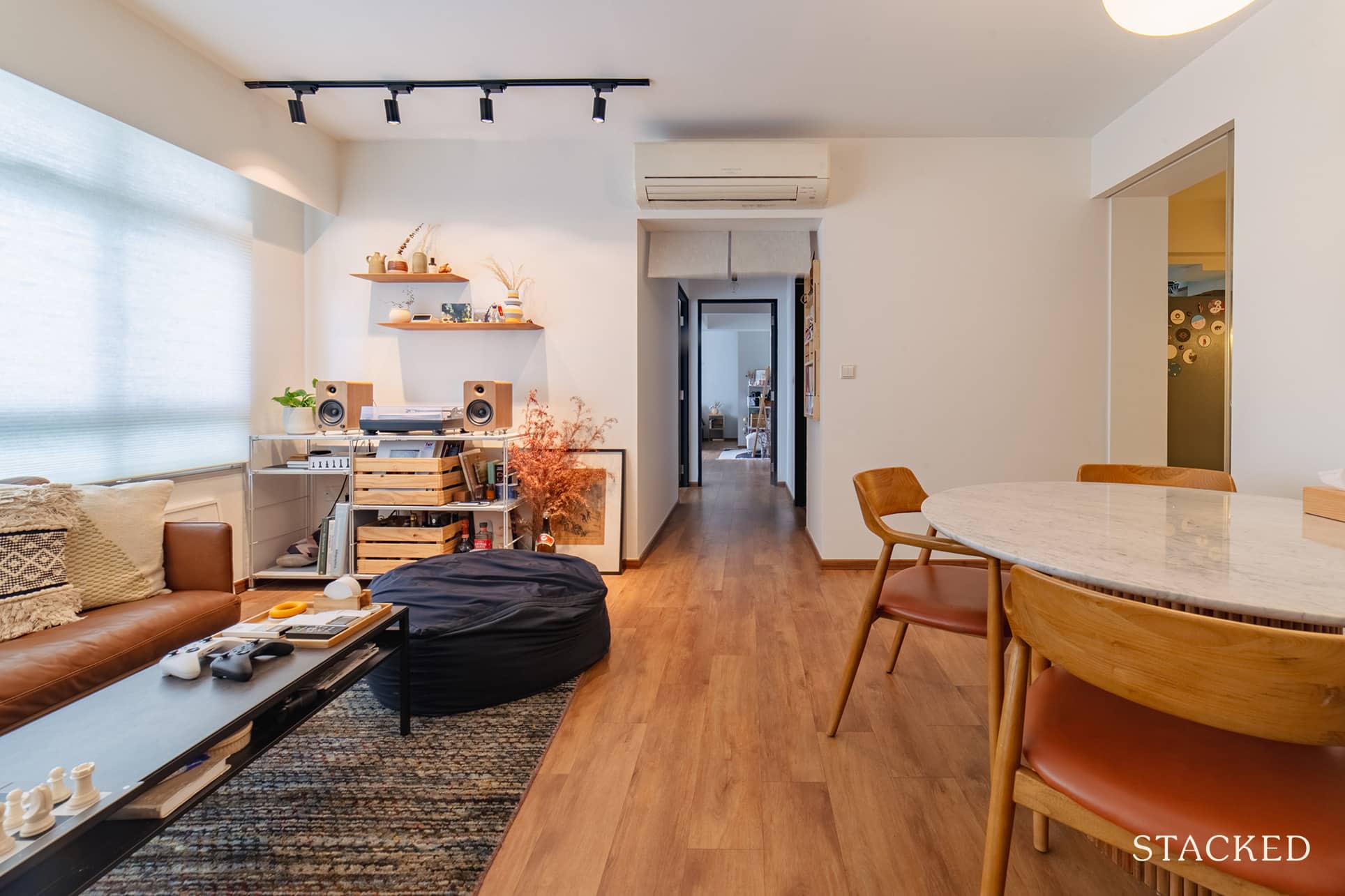
Made from a blend of PVC and other materials, vinyl is the top contender when it comes to home and commercial flooring because of its durability. It also comes in a wide range of styles, colours, and patterns and is easy to maintain.
I definitely highly recommend this as it strikes a good balance between affordability and durability. Let’s break down the crucial characteristics which make it a great choice for your forever home’s flooring.
To be sure, durability is one of vinyl’s main selling points because it’s highly resistant to scratches, dents, and stains, making it a good option for high-traffic areas in the home. It’s also waterproof and able to withstand exposure to moisture, which is why it’s a popular choice for bathrooms and kitchens.
You can choose a variety of styles, from wood-look planks to designs that look like stone tiles. This allows you to achieve the same aesthetic without having to worry about maintenance since it doesn’t require special cleaning products or treatments.
Maintaining a vinyl floor is only a matter of sweeping, vacuuming, or mopping with a damp cloth – your choice, whichever is most convenient for you.
Of course, vinyl flooring is not without its drawbacks.
It’s vulnerable to fading and discolouration when exposed to direct sunlight for extended periods of time. It can also be susceptible to damage from sharp or heavy objects, such as dropped kitchen knives or heavy furniture. Plus, if this does happen, vinyl flooring can be easily replaced with minimal need for hacking.
Sintered Stone (But Can Be Brittle)

Sintered stone is a relatively new type of material that is becoming increasingly popular in the construction industry. It is made by compressing and fusing natural materials, such as clay, silica, and feldspar, at extremely high temperatures to create a highly dense and durable material that is resistant to scratches, stains, and extreme temperatures.
One of the main advantages of sintered stone is its durability. It is highly resistant to impact, scratches, and abrasions, which makes it a good option for use in high-traffic areas indoors as well as for outdoor applications. And while Singapore doesn’t have harsh weather conditions (besides the sun), it’s also good to know that sintered stone is also resistant to extreme temperatures and UV exposure.
However, one of the potential drawbacks of sintered stone is its brittleness.
While sintered stone is highly durable and resistant to damage, it can be brittle and prone to cracking or chipping if subjected to extreme force or impact. This can be a concern in areas where heavy objects are frequently moved or dropped.
Another potential drawback of sintered stone is its high cost. Since it’s a relatively new and innovative material, it can be more expensive than some other options, such as natural stone or ceramic tile. Additionally, sintered stone requires specialised tools and equipment for installation, which can add to the cost of the project.
Make Your Forever Home Live Up To Its Namesake
You may not be able to ensure that your home will literally last forever, but with the right materials, you can make it feel like it’s truly a forever home. It’s not fun to have to replace different parts of the home later, only because you chose to skimp on certain materials.
While some of the materials may end up incurring more cost than their cheaper counterpart, remember you’re going to reside in your home for a long time. It may look costly right from the get-go, but it can be more cost-effective in the long run since you won’t have to worry about replacing or repairing your walls or floors anytime soon.
If you’d like to get in touch for a more in-depth consultation, you can do so here.
Have a real estate question, or not sure what your options are? Email us at stories@stackedhomes.com.
Adriano Tawin
Adriano is an old school real estate guy. Prior to establishing his own architectural/engineering design firm in New York City, he’s worked for a Brooklyn-based developer developing multifamily residential projects across the 5-Boroughs. In Singapore, he has experience with managing hospitality projects and rehabilitation of conservation shophouses. In his free time, he enjoys photography.Read next from Property Advice

Property Advice Should We Buy An Old 99-Year Leasehold Condo To Live In: Will It’s Value Fall When The Lease Runs Out?

Property Advice We Own A $800K 1-Bedder And A $1.1M 3-Bedder: Is It Possible To Upgrade To A 4-Bedder Condo?

Property Advice I Own A 55-Year-Old HDB Flat, But May Have To Sell — Can I Realistically Buy A Freehold Condo With $700K?

Property Advice We Own A 2-Bedder Condo In Clementi: Should We Decouple To Buy A Resale 3 Bedder Or Sell?
Latest Posts

Singapore Property News HDB Resale Prices Finally Slowed in 2025 — Will It Continue in 2026?

Singapore Property News Breaking News: District 23 Condo Sells Out In Under Two Years At $2,120 Psf Average

On The Market Here Are The Cheapest 3-Bedroom Condos in Central Singapore You Can Still Buy From $1.15M

Property Market Commentary Why The Singapore Property Market Will Be Different In 2026 — And It’s Not Just About Prices

Editor's Pick 2025 Year-End Review Of The Singapore Property Market: What The Numbers Reveal

Pro This 21-Year-Old Condo Didn’t Sell Out Initially, Yet Became A Top Performer

Editor's Pick How The HDB Resale Market Performed In 2025, And What It Means For 2026 Prices

Editor's Pick 4 Key Trends Reshaping Singapore’s New Launch Condo Market In 2026

Editor's Pick What I Only Learned After My First Year Of Homeownership In Singapore

Singapore Property News Why More Land Doesn’t Automatically Fix Housing In Singapore

On The Market Here Are The Cheapest 4-Room HDB Flats in Central Singapore You Can Still Buy From $490K

Pro How A Once “Ulu” Condo Launched In 1997 Became A Top Performer

Editor's Pick I Reviewed A New Launch 4-Bedroom Penthouse At Beauty World

Property Market Commentary When Renting In Singapore Is The Smarter Move — And Buying Can Wait

Editor's Pick Why Singaporean Families Are Looking At This Landed Enclave From Around $4M


